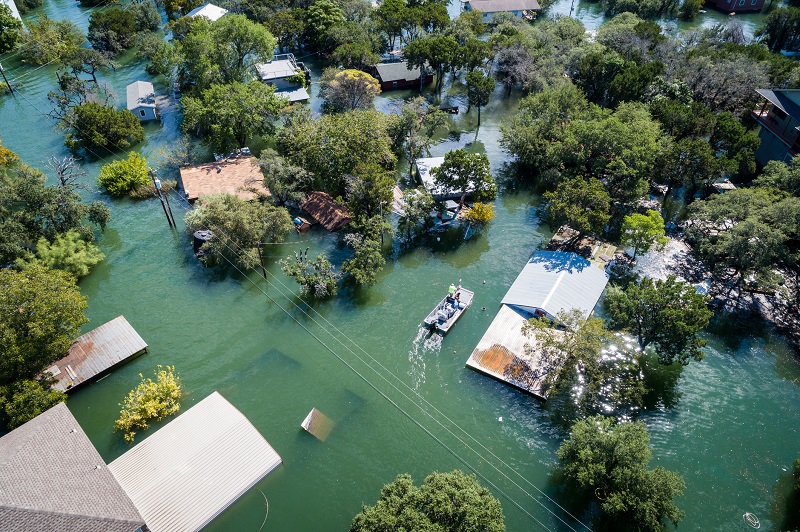Six to 10% of Canadian homes aren’t insurable for flooding, industry stats show

When it comes to Canadian homes being resilient against severe water damage wrought by climate change, a significant portion of them aren’t insurable for flooding, says Aviva Canada CEO Jason Storah.
Storah was speaking to Canadian Underwriter about the company’s 2022 year-end results. CU asked him for his assessment of Canadians’ current state of resilience against climate change, and what needs to happen in 2023 to improve this. Many Canadian homes are built in areas at high risk of water damage, he observed.
“IBC [Insurance Bureau of Canada] believes that anywhere from 6% to 10% of Canadian homes are currently uninsurable,” Storah replied. “And logically, if nothing changes, that number is only going to go up.
“In the last few years, NatCat weather-related losses were around $2 billion. Last year, they were $3.1 billion. So, this [climate change risk] is very real, and it’s very much here and now. Whether it’s flooding, hurricanes, wildfires, ice storms, and more — it’s very, very real.”
To improve Canadians’ resilience against severe weather events, Storah said P&C companies are thinking both long-term and immediate term.
Long-term, P&C companies themselves will need to reduce their carbon footprint. Plus, their investment strategies will need to reflect their concern about the environment, Storah said. He pointed to Aviva Canada’s strategy to become a Net-Zero carbon emissions company by 2040. Also, he said, the company has invested $3 million to put electric vehicle chargers in remote communities; invested $23 million for nature-based carbon capture projects in Canada; and introduced parametric solutions for excess rain in Canada.
“You can expect to see more from us in [that parametric space] because it definitely feels like that has a role to play in the broader sustainability outlook and ambition going forward,” Storah said.
In the immediate term, P&C insurance companies have an eye on the impact of supply chain disruption on claims inflation, which affects the cost of building supplies during NatCats, Storah said. The idea is to help Canadians recovering from a natural catastrophe event to “build back better,” using hail-resistant roofs and fire-resistant siding, for example.
On the property side, Storah noted inflation rates for building materials hovered in the 7% to 8% range last year. Plus, there were some spikes in raw materials costs month over month. He said Aviva was looking into the issue of inflation as early as 2021; at that time, the company was aware of the impact of demand surge during a catastrophic event, which can augment the effects of inflation.
“We were looking at the effects of underlying inflation and at some of the things that can spike it,” Storah said. “NatCats have an impact as well because that additional squeeze on demand can also create additional pressures [on the cost of materials]. I think we didn’t see that as much particularly in 2022. But we are certainly very cognizant it could be an additional variable that hits us in 2023. So, certainly lots of eyes on inflation in property.”
And in the auto side as well, where inflationary values on material costs at one point were significantly higher than in property lines.
“I think at its peak, there were a few months when we were seeing auto physical damage inflation in the 14% to 24% range,” Storah said. “But by the end of the year, it came down to about 8%, which feels a lot more reasonable. It’s still high, but certainly a lot more manageable.”
Feature image courtesy of iStock.com/RoschetzkyIstockPhoto







